My girlfriend and I have been working on a few projects around our apartment building. The gardens in my grow log are on the south side of the property. There is a large area on the north side that is largely unused. We mainly use it for debris from landscaping projects. It's an unattractive place that doesn't get much use. I'm going to be working on this area for the next few months to make it more of an open woodland area. Most of this is hard soil that has sharp angles and is not very well held together. The first thing to do is create a healthier soil structure. This grow log is sort of a practice run for a mushroom installation business that I am working on and the entire apartment property is pretty much fair practice space. The landlord is ok with pretty much anything as long as it makes the place look better. Fortunately for us, we are horticulturists and always love open season

Six yards of woodchips were delivered to me consisting of mostly hardwood with some douglas fir and pine mixed in, as well as some logs. This first bed is Stropharia rugosso-annulata, a primary decomposer. It's a vigorous species and can eat through most fresh material. I used a very low spawn rate for these projects and did not pasteurize anything. I believe that these species are so vigorous that they will have no problem eating all the substrate.

The area is 45' x 17'.
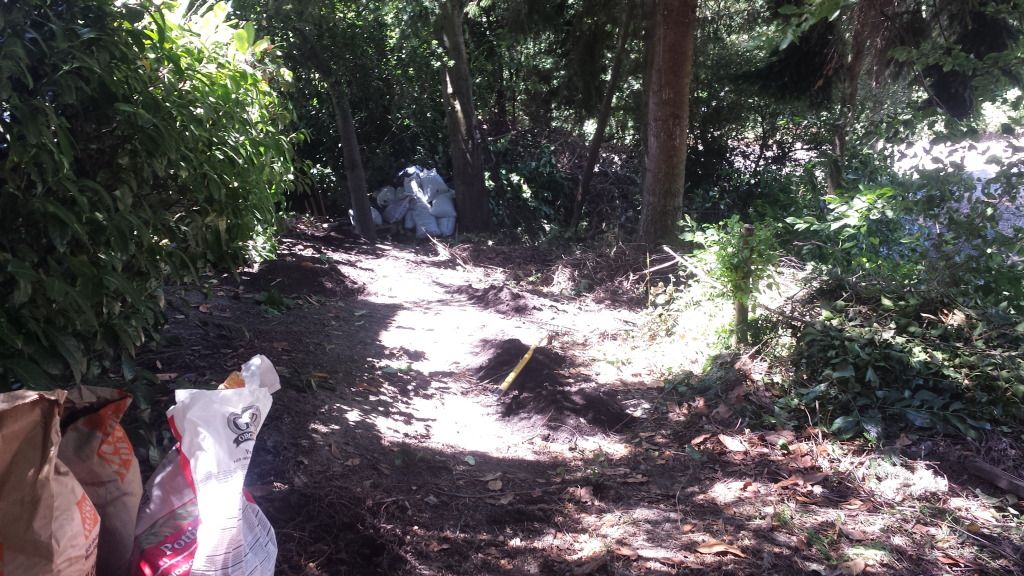
First I laid down a 2" layer of woodchips
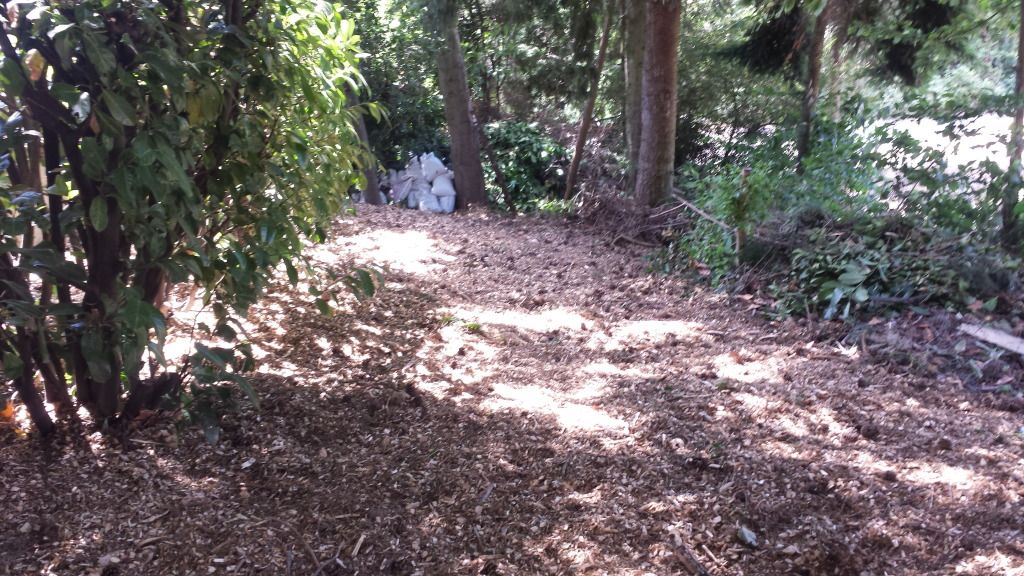
Then I inoculated the chips with the sawdust spawn and covered them with douglas fir sawdust

Over this I put soaked straw
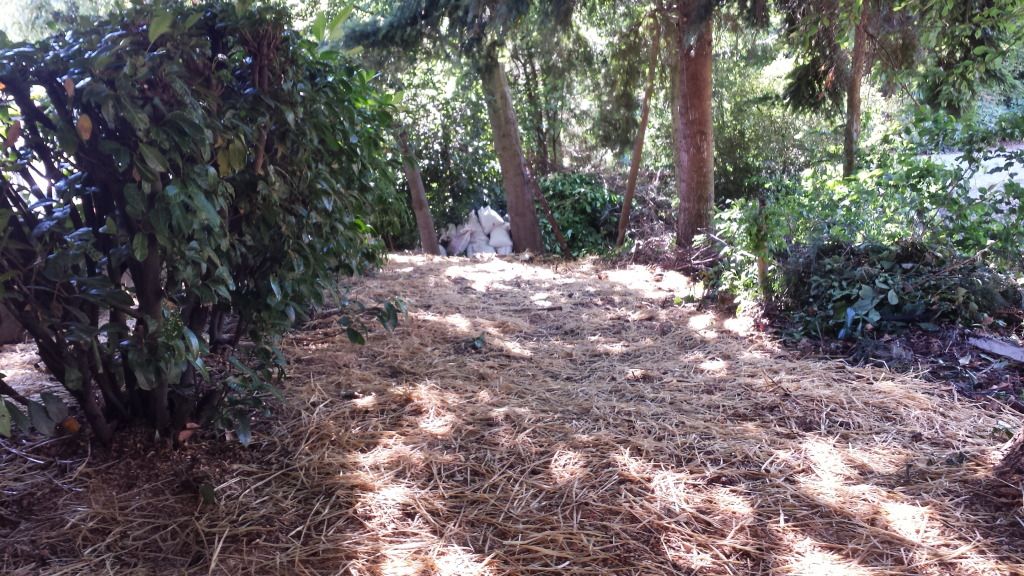
And added another layer of woodchips. Afterwards, I soaked the chips with a sprinkler.
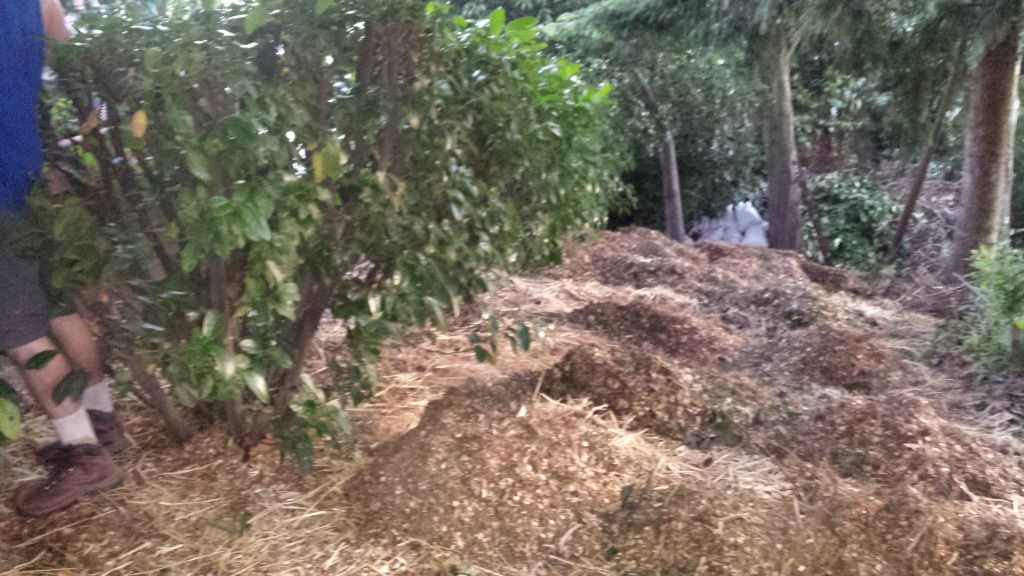
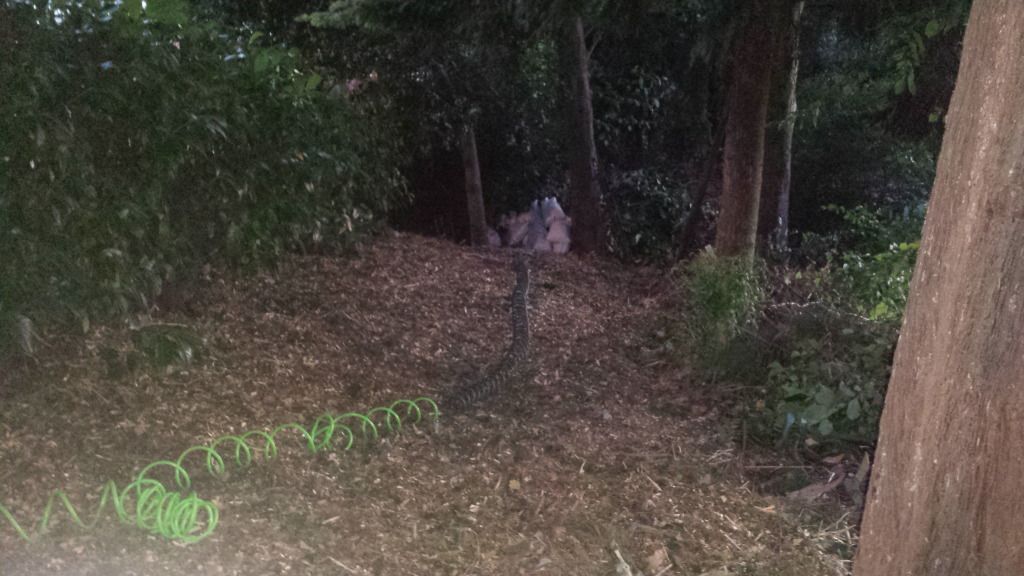
The next day I gathered a few people during our barbecue and we placed cardboard over the site and covered that with laurel trimmings before using the sprinkler for an hour. The day after, I removed the cardboard and placed the leaves back as the only moisture retention barrier. Then I watered again. I thought that the cardboard might be preventing the water from penetrating to the wood chips. The laurel trim should do just fine. The area will need to be watered every few days for the first few weeks to ensure that the spawn is healthy enough to colonize the wood chips.
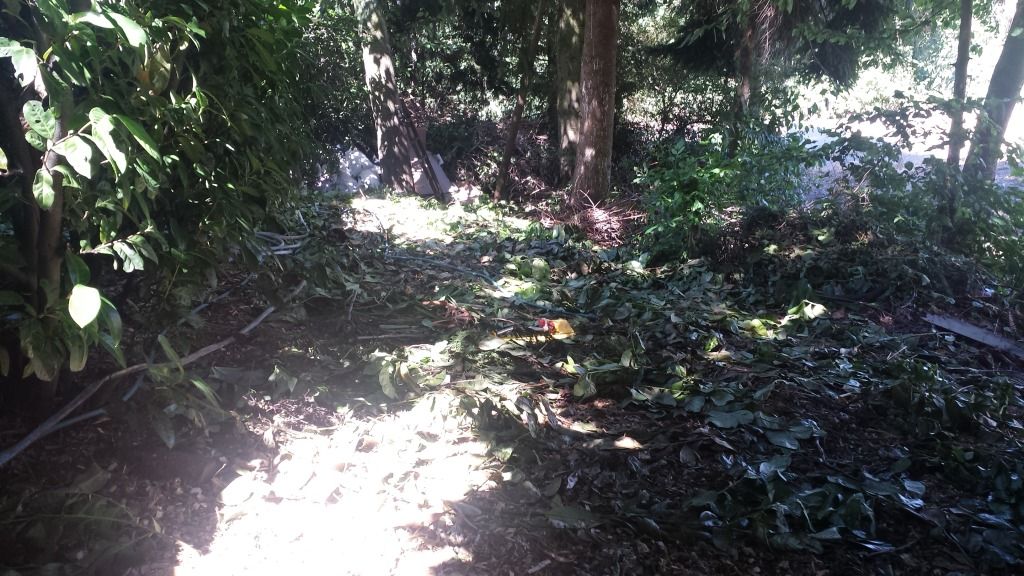
The next area is also on the north side, parallel to the stropharia bed. This area has a lot of erosion problems. The birch and massive laurel tree are the only things holding it together. Someone attempted to control the erosion by making levels with wood planks, but the problem persists. Initially, I was going to dig levels into the hillside and support each one with some found madrona logs (that were going to be made into didgeridoos before I realized they had cracked in all the wrong places). Too much work! Instead, I used what little materials I had. I wish I would have gotten a picture of the site before we worked on it. It was a right 25 degree angle before.
Initially I was going to use straw to make it more concrete, but I forgot. We started out by using whatever jute we had to hold back woodchips in the worst areas. Then, we simultaneously distributed spawn while it was being watered in and covered again with more woodchips, and watered in again. The depth was six inches overall, with the spawn right in the middle.
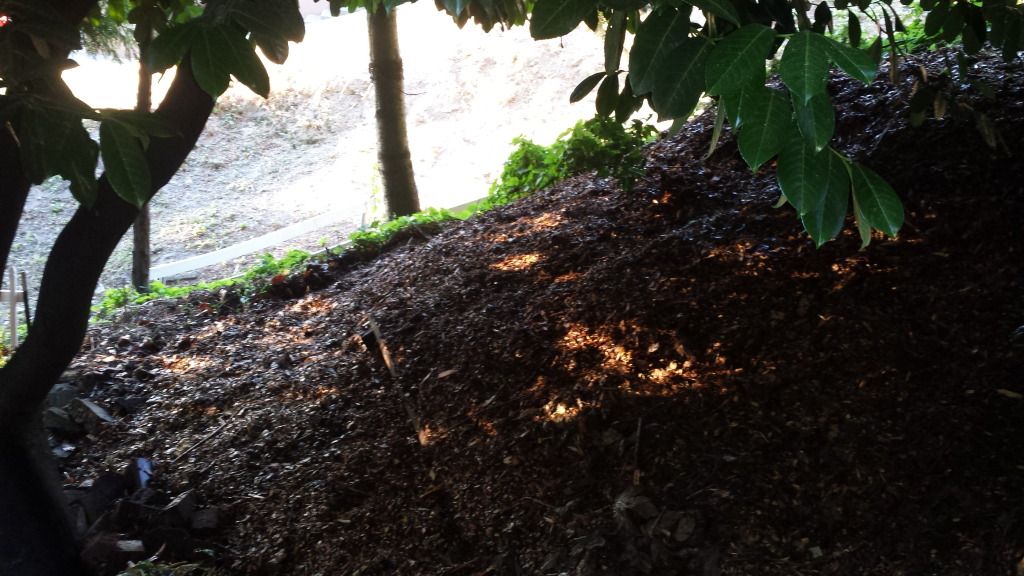
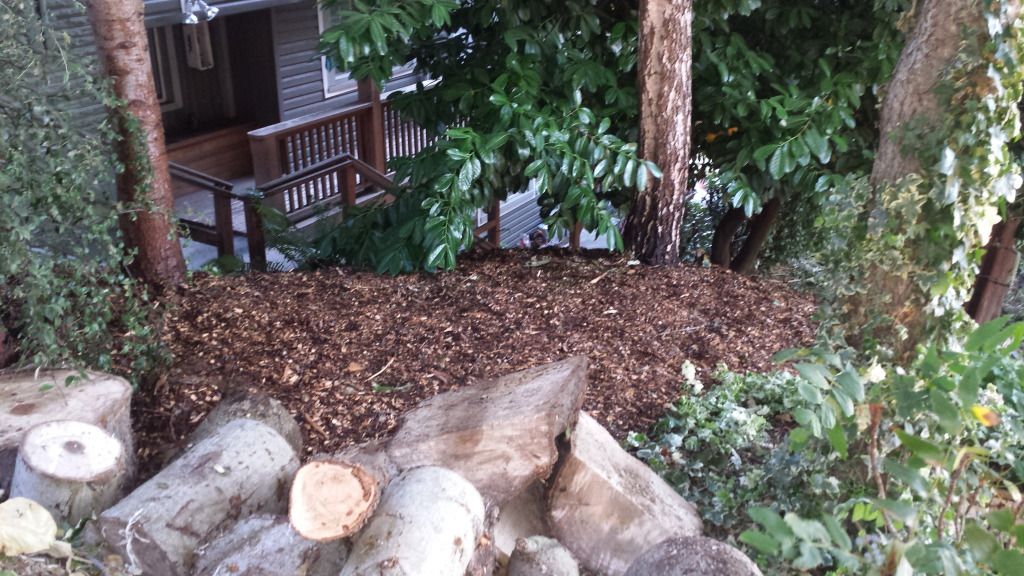
There is about a yard and a half of remaining woodchips, with some logs. We'll have to get rid of them soon as they are in parking spaces and the property isn't our personal storage. Hopefully we can use them to inoculate other areas nearby. With this in mind, I bought some burlap sacks. I also took about a cup each of the stropharia and pluerotus spawn and inoculated the cardboard boxes that they came in. This fresh mycelium will easily colonize moist cardboard and woodchips.
First, the cardboard and woodchips were are soaked until saturated. For cardboard it takes around a half hour. Wood chips may take a day. I let these dry out until they are moist but no longer dropping water. I placed some of the spawn on the cardboard and mixed the rest evenly within the chips. This is actually a photo of agar on cardboard as a separate experiment with king oyster, but the process is essentially the same.
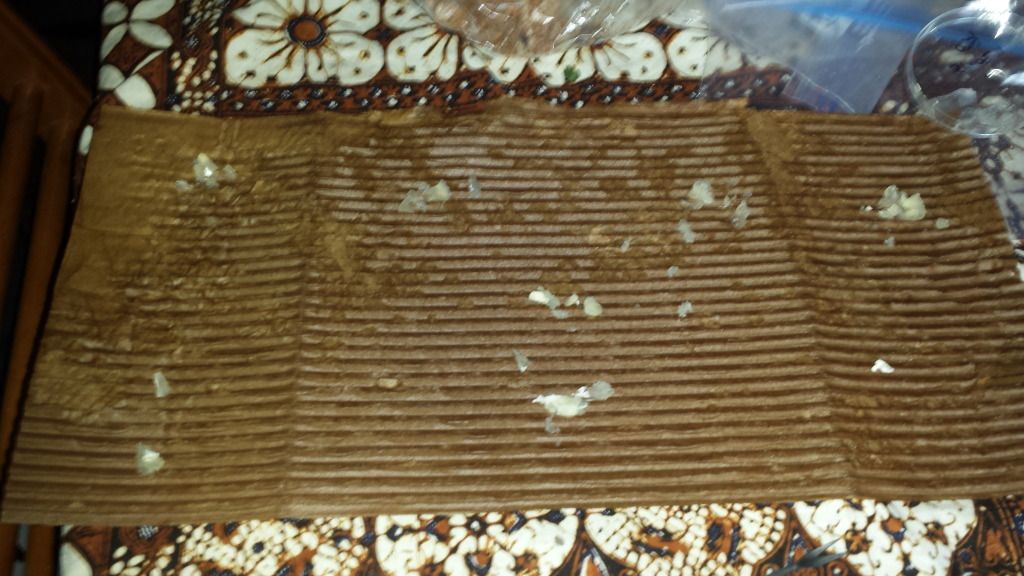
Next, they are rubber banded and labeled, then placed in plastic bags.
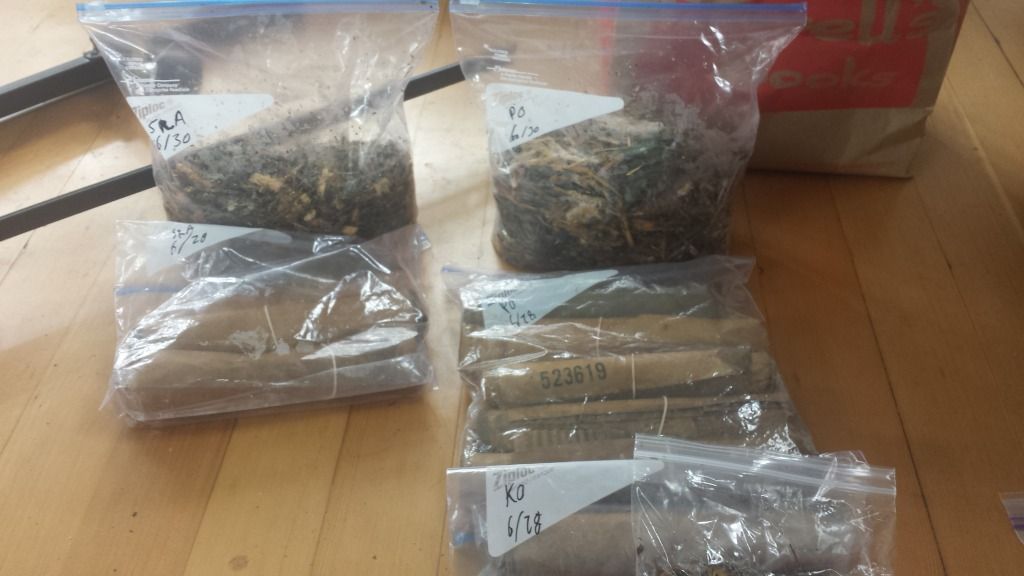
They are stored in darkness in the temperature range of 65-79f. Mine are in a paper bag in my grow room which is 79f and 50% humidity. I will check on them every few days and open the baggies for air exchange and contamination checks. So far, they seem to be colonizing the cardboard and chips that I put them in. These will grow out and become inoculant for other areas on the property or wherever they are needed outside of it.
 Author
Topic: Stropharia and oyster grow log (Read 23740 times)
Author
Topic: Stropharia and oyster grow log (Read 23740 times)
